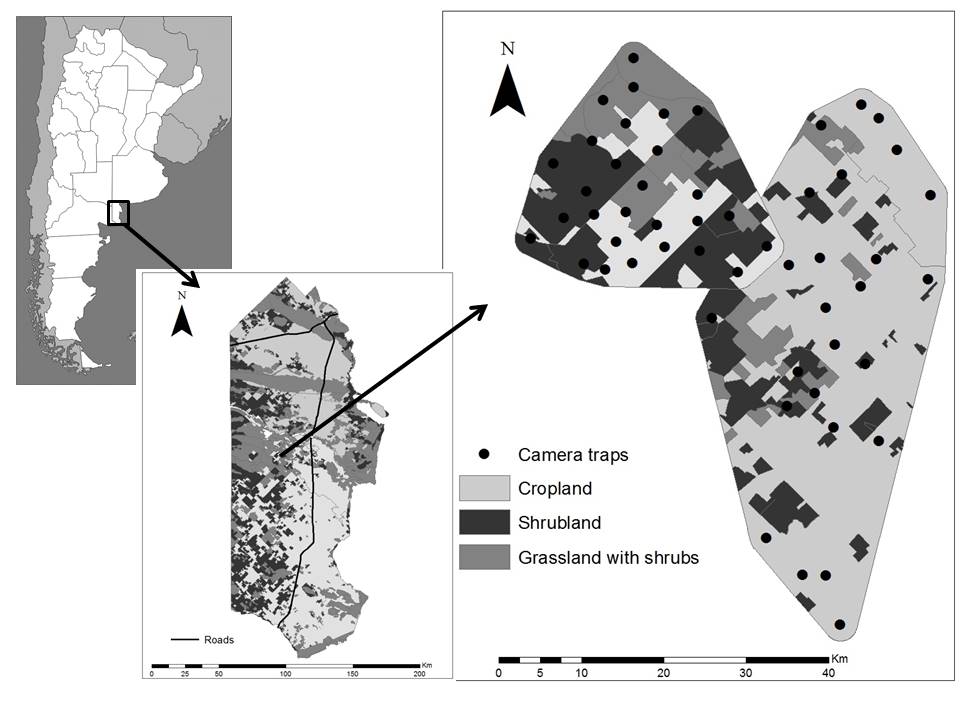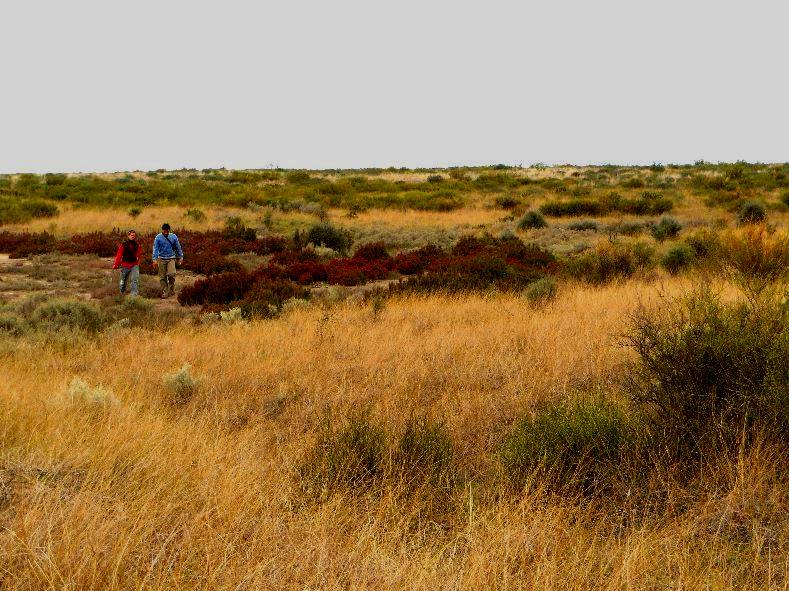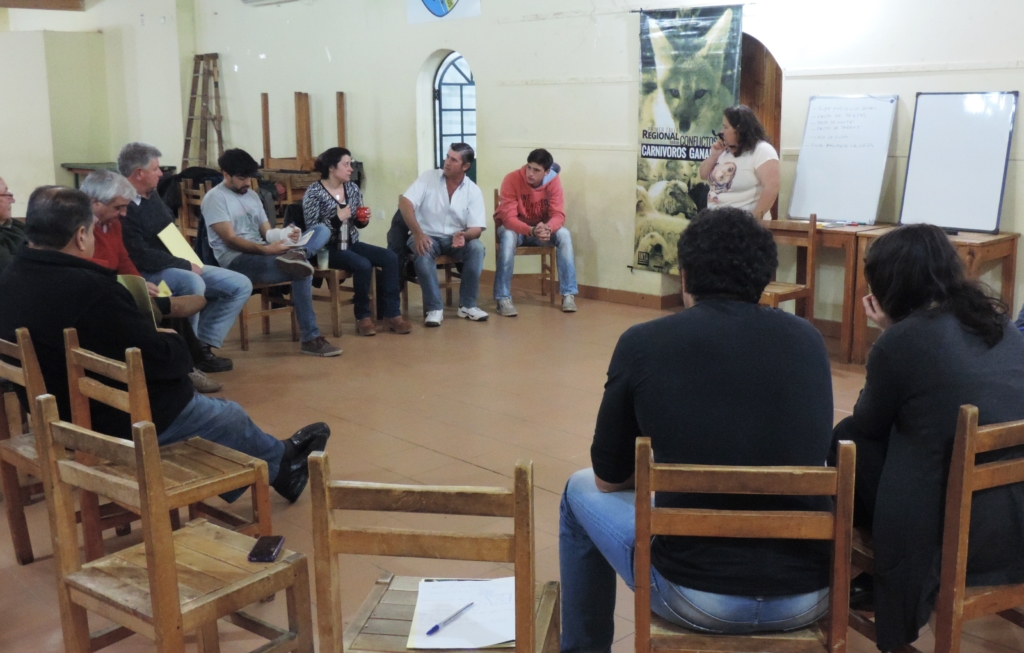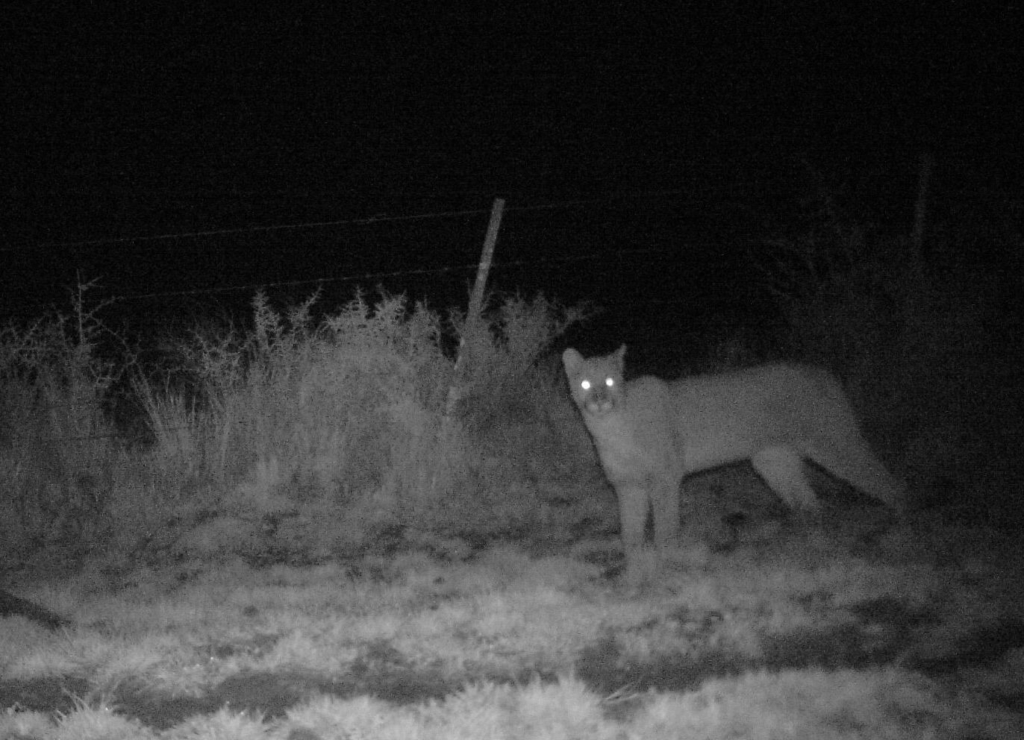Estela Luengos Vidal, M. Guerisoli, N. Caruso, M. Franchini, Z. McDonald, and M. Lucherini
The puma (Puma concolor) is the most widespread top predator and one of the most controversial carnivores in Argentina. It occurs from the high-altitude deserts of the Andes to tropical and subtropical forests, and from the Pampas grasslands to the Patagonian steppe (Nowell and Jackson 1996). The natural prey base of Argentinean puma populations formerly included vicuña, guanaco, Patagonian huemul, taruca, Pampas deer, Marsh deer, rheas, Plain viscachas, Mountain viscachas, Patagonian hare, and capybaras. In the southernmost part of the country large native prey still comprise the bulk of puma diets (Zanón et al. 2012); however, during the last two centuries, hunting of wild prey and conversion of natural habitat into ranches and farms increased conflicts with humans and predation on livestock (Novaro et al. 2000, Walker and Novaro 2010).
This is the case in the southern Espinal where we have been working on carnivore-human conflicts since 2008. Dense shrublands and grasslands of this region have been transformed to create space for livestock. The initial habitat modeling that we performed, based on camera trapping records, show most of the landscape is no longer suitable for pumas (Caruso et al. 2015). A comparison with other carnivores occurring in the region revealed that pumas use sites with moderate fragmentation, but that they prefer preserved areas and avoid sites with significant human presence (Caruso et al. 2016).


To buttress our previous results and understand the variables affecting habitat use by pumas, we carried out a more intensive camera trapping survey over the last 24 months in two adjacent areas that differed in anthropogenic impact. Capture rates were 67.9% of 28 trapping stations in the area farther from the main road with more natural habitats, while pumas were recorded in 28% of 25 stations located closer to the road, where croplands and pastures prevail.
Interview data (2008-2015) show that sheep were the most predated livestock (7.4 head / year), followed by lambs (2.6 head / year), calves (6 head/year), and foals (0.3 head/year). Based on average prices, the economic losses caused by pumas per ranch per year (USD) were $393 for sheep (range $59-$4713) and $431 for cattle (range $70-$5953). Since sheep provide the primary income in the region, damage caused by pumas is a legitimate concern, so we scrutinized effects of puma predation in more detail. Comparing losses caused by pumas with the numbers of livestock owned, we found that pumas killed 2.2% and 3.9% of the total cattle and sheep, though the proportion individual ranches varied from 2% to 17.8%. We obtained a record of confirmed predation events in a 484-km2 area and found that during 16 months, pumas killed 33 sheep and 4 calves ( 2.23/month or 6.8/ 100 km2).
In the same period, ranchers killed 13 pumas (0.79 pumas / month or 2.7 pumas / 100 km2). This intensity of hunting is not justified by the economic impact of puma predation, and a puma population in the Espinal cannot sustain such a high mortality. The conflicts between pumas and local people are exacerbated by poor response by the government, which does not provide compensation to ranchers affected by puma predation nor provide a forum for their complaints. Predictably, local people see puma hunting as the only solution.

In 2015, we began participatory workshops to further quantify livestock losses and share this information with ranchers, hear ranchers’ positions on the causes of puma predation, and identify, with their help, effective mitigation measures. Analyses of data from the first four workshops indicates that ranchers perceive a widespread intensification in puma predation, and believe that diminished human presence in rural areas is the major cause. Other causes mentioned included presence of shrub land, laws forbidding puma hunting, and poor livestock management.
However, we found that only two of the 12 participants had changed their husbandry, whereas nine (75%) tried to kill pumas. Yet only 3 of the participants killed pumas in the previous year (averaging 3.3 puma per person). Of the 7 ranchers who applied mitigation measures, 6 corralled their livestock at night, 1 used donkeys as guardian animals and 1 reinforced their enclosures. Most participants would try mitigation but requested expert advice, because past attempts had failed or proved uneconomical.
We now plan to test the efficacy of Conditioned Taste Aversion to reduce livestock losses. We will start by testing two substances that have proven effective with other carnivores (Massei et al. 2004; Nielsen et al. 2015). We have started collecting puma tissue and fecal samples to investigate genetic differentiation and gene flow in a meta-population framework.

Although puma-livestock conflicts are common throughout Argentina, this is the first attempt to assess their true impact on ranching and the effects of retaliatory killing on puma populations. Our project will provide a baseline without which meaningful management cannot occur. We expect that this project will serve as a pilot experience to reduce livestock predation by pumas and thus provide sound recommendations to mitigate conflict in other areas.